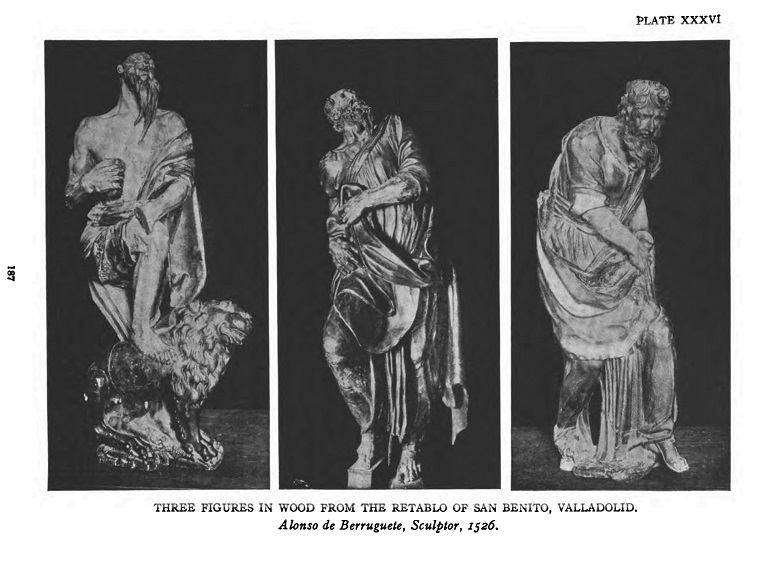Alonso Berruguete

Alonso González de Berruguete (Alonso Berruguete) (c. 1488 – 1561) was a Spanish painter, sculptor and architect. He is considered to be the most important sculptor of the Spanish Renaissance, and is known for his emotive sculptures depicting religious ecstasy or torment.[1]
Born in the town of Paredes de Nava, Berruguete studied art under the tutelage of his father, the painter Pedro Berruguete. Following his father's death in 1504, Berruguete travelled to Italy to continue his study of art, spending most of his time in Florence and Rome. It is here that he studied sculpture under the Italian master, Michelangelo. His paintings produced in Italy showed a mannerist influence, with his art being compared with contemporaries such as Jacopo Pontormo and Rosso Fiorentino.[1]
Berruguete returned to Spain in 1517, and in 1518, was appointed to the position of court painter and sculptor by Charles V of Spain. From this point in his career forward, Berruguete concentrated on sculpture. Works of his include an altarpiece at the Irish college in Salamanca (1529–1533), choir stalls at the Cathedral of Toledo (1539–1543) and a tomb for the Archbishop of Toledo Juan de Tavera at the hospital that Tavera founded, the hospital of St. John the Baptist in Toledo (1552–1561).[1]
Wood sculptors
After his training in Italy he went back to the Spanish tradition of making wood sculptures, which included the altarpieces at the San Benito el Real, Valladolid. "The exaggerated movements of his figures became a mannerism with his followers Andrés de Nájera, Esteban Jordán, Inocencio Berruguete and others..."[1]
References
- ^ a b c d Arthur Byne; Mildred Stapley Byne (1917). Spanish Architecture of the Sixteenth Century. G. P. Putnam's sons. pp. 186–.
External links
![]() Media related to Alonso Berruguete at Wikimedia Commons
Media related to Alonso Berruguete at Wikimedia Commons

